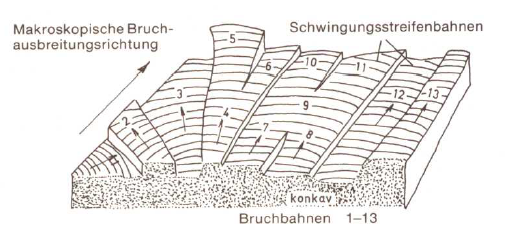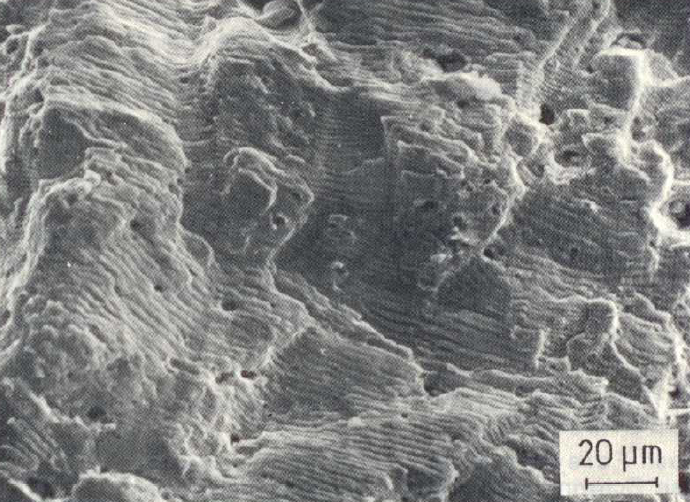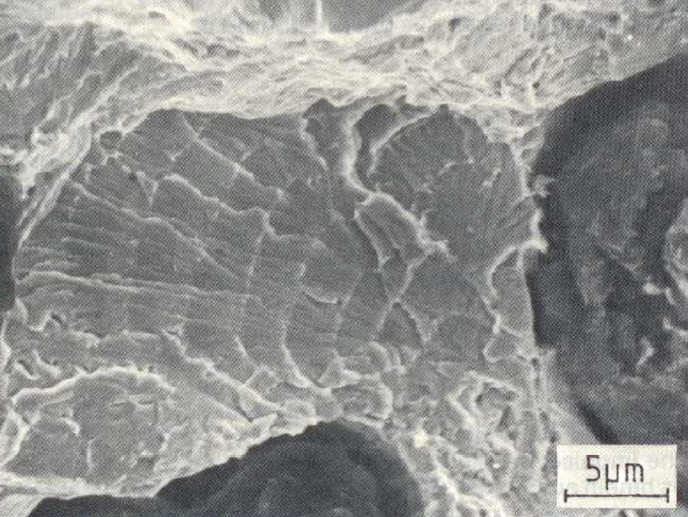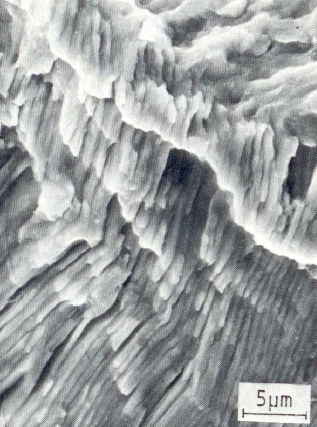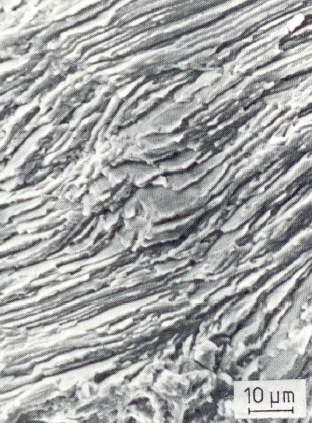Fatigue failure
The most frequent cause for operational failure is breakage of the material occurring due to fluctuating loads. This type of breakage is referred to as fatigue failure or endurance failure. However, it must be noted, that the occurring stresses may be far below the yield point.
The overall breakage process can be divided in three major stages; however it is not possible to strictly distinguish these stages from each other:
- Solidification
- Incipient crack and crack phase I - less than 45° off the direction of tensile stress (s. a. Crack initiation)
- Crack propagation - crack phase II - vertical to the direction of tensile stress
Both crack initiation and crack propagation take place under plastic or at least micro-plastic deformation. Due to solidification under reversed stress occurring due to dislocation rearrangement, sub-microscopic incipient cracking already takes place in a very early stage of the damage process. Crackgrowth initially proceeds along the slip planes in which crack formation took place but in most cases only along a range of one to two grains, except in high-strength nickel-cobalt alloys.
The section around which the crack front propagates upon every load reversal locally stands out against the rupture surface in the form of fatigue striations running across the direction of crack propagation; The term of “fatigue striation” was coined by Schmitt-Thomas and Klingele. These marks must be differentiated from the macroscopically visible arrest lines that generally do not occur due to individual load reversals but are caused through various operating periods and related standstill or skipping of cracks.
A stripy pattern is obtained due to repeated load reversals. The the appearance and orientation of fluctuation striations is influenced by the material, ambient effects and the amplitude. Fatigue failures propagate in such a manner that upon every load reversal plastic deformation takes place in the proximity of the end of the crack. This is a transcrystalline process. Due to the poly-crystalline structure, the breakage front is locally split which results in the microscopically visible image of many parallel fracture marks that are separated by offsets (Figures 1 and 2).
Intercrystalline propagation
Propagation of cracks often may take place along the grain boundaries. Upon slight magnification, grain boundary breakage appears as a glossy surface; however these surfaces may also contain striation and secondary cracks, similar to transcrystalline breakage.
Brittle, transcrystalline propagation of fatigue cracks
According to Forsyth, differentiation is made between ductile and brittle fatigue breakage. Brittle fatigue breakage takes place very rarely. A characteristic feature of this type of breakage is the fan-shaped propagation of fracture marks and fragmentation of the failure striation in short, smooth sections (Figure 3), as is likely to frequently occur in GJS.
Figures 4 and 5 illustrate the various formations of fatigue breakage.
Additional references:
Endurance strength
Fatigue test
Haigh diagram, Wöhler curve
